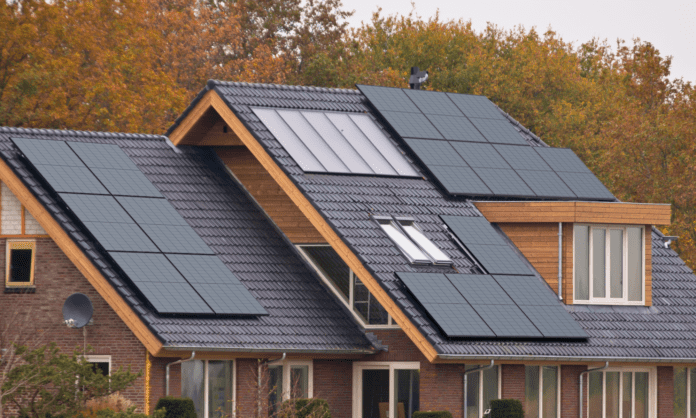When deciding whether or not to install a solar system, an obvious concern is the number of solar panels you will need to install. The number of PV panels you require for your off-grid energy needs typically makes up the bulk of your initial investment in switching to solar.
A 1,000 sq. ft. home has limited roof space for solar panels. Luckily, the average homeowner should have enough room for a full-sized array. It just requires being modest with energy usage and knowing how to optimize your solar energy production per square foot.
How Much Solar Power Does a 1,000 Sq Ft House Need?
Your home’s square footage doesn’t necessarily impact solar power’s viability, but it gives you a good framework to determine ballpark figures for your household energy usage. Other considerations also need to be part of the calculation. A 1000 sq ft off-grid tiny home will likely require much less energy than a suburban apartment with air conditioning, washing machines, and other large appliances.
Rather than solely considering your square footage, you need to determine your average electricity usage. This only requires a quick peek at your electric bill, or we can look at national energy usage averages.
Estimate Solar Usage
In 2015, the Energy Information Administration gathered detailed data on residential electricity usage. For houses fewer than 1,000 sq. ft., the average family used 6,627 kWh of electricity over the year. Homes between 1,000 and 1,499 used an average of 10,015 kWh of electricity.
Based on these figures, the average 1,000 sq. ft. home likely uses around 8,500 kWh of electricity per year or approximately 708 kWh per month. A solar power system like EcoFlow’s Power Kits provides a range of power options, from 2kWh to 15kWh, to meet the demands of even the most energy-consuming small households.
Assessing Solar Panel Efficiency
The daily amount of peak sunlight is the most significant factor affecting solar panel energy production. A typical home located in the U.S. receives an average of 4 hours of peak sunlight per day. A 400W rigid solar panel generates 400 watts per hour — or about 1.6 kWh — per day under ideal conditions, averaging out to 48 kWh per month. This figure can vary widely depending on seasonal conditions, exact location, and the position of the panels.
If your home requires 708 kWh of electricity per month, you would need at least fifteen 400W panels assuming an average of 4 peak sun hours per day. A high-quality solar generator, such as the EcoFlow DELTA Pro, supports up to 1600W of solar input with its built-in MPPT charge controller, which can help maximize the efficiency of your panels. For whole home power on this scale, EcoFlow’s power kits and smart home ecosystem are also worth a close look.
Consider Environmental Factors
A 1000 sq. ft. home with a pitched roof will likely have a maximum of 500 sq. ft. of usable roof space for solar installation, with the other half of the roof facing away from the sun. One rigid PV panel may take up around 25 sq. ft., allowing for adequate spacing between panels. Theoretically, you could fit about 15 -20 of these panels on the viable roof space of a 1000 sq. ft. home — adequate space for the 15-panel array we calculated in the previous section.
If you lack sufficient roof space, portable solar panels may also be an option. These don’t require roof installation and allow you to easily position the array for optimal light exposure on the ground.
How Does Installation Affect Solar Panel Energy Production?
You need to install your solar panels in a position that allows them to collect the most sunlight. Ideally, the panels should face south. However, you can accommodate roofs facing different sun exposure with specialty mounting brackets that orient the panels toward the sun.
The sun’s trajectory across the sky changes with the seasons, so some homeowners even install tilting brackets that allow you to adjust the angle of the solar panels throughout the year.
Various factors can reduce the sunlight that reaches an otherwise well-positioned PV panel array. Watch out for trees and light poles that cast shadows across your roof. If you live in a metropolitan area, pollution and smog may reduce the sunlight you receive.
Installing solar panels in especially rainy or snowy areas may drastically reduce your solar power production. Snow will have to be cleared from solar panels to receive sunlight. Prolonged storm systems can block out the sun for weeks, causing you to lose solar power if your battery reserves aren’t sufficient.
Final Thoughts
Now that you know how many solar panels you need for a 1000 sq. ft. home, you can start to price out your system.
EcoFlow offers a range of options to build your Smart Home Ecosystem, perfect for off-grid, RV, and residential applications. Shop today for solar panels, power stations, and more.
